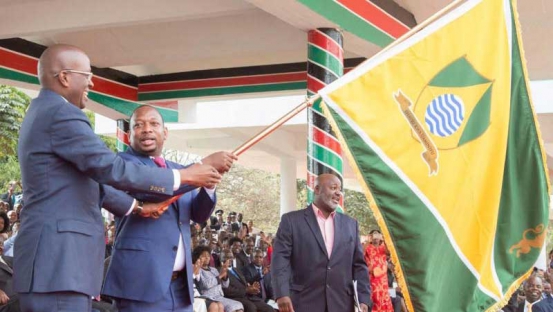×
The Standard e-Paper
Read Offline Anywhere

Governor Mike Mbuvi Sonko (right) and his deputy, Polycarp Igathe, wave the Nairobi County flag after his swearing-in ceremony in August.[File, Standard]
A hundred days into Governor Mike Sonko’s reign, the city is still undergoing slow transformation.